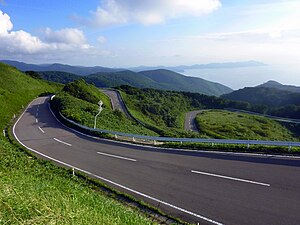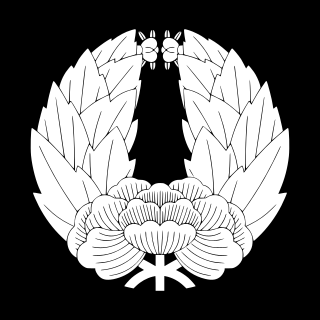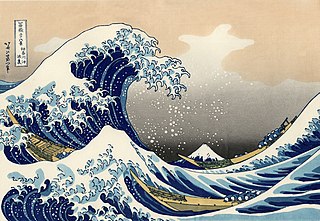
Hiranai is a town located in Aomori Prefecture, Japan. As of 1 April 2019, the town had an estimated population of 11,016 in 4,951 households, and a population density of 51 persons per km². It is the most heavily populated town in Higashitsugaru District. The total area of the town is 217.08 km2 (83.82 sq mi).
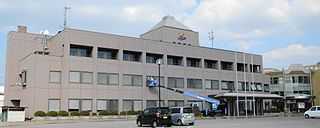
Fujisaki is a town in Aomori Prefecture, Japan. As of 1 September 2016, the town had an estimated population of 15,172 in 5943 households, and a population density of 410 persons per km². The total area of the town is 37.29 square kilometres (14.40 sq mi).

Itayanagi is a town located in Aomori Prefecture, Japan. As of 31 December 2017, the town had an estimated population of 13,517, and a population density of 320 persons per km². The total area of the town is 41.88 square kilometres (16.17 sq mi).

Kodomari was a village located in Kitatsugaru District in western Aomori Prefecture, Japan.
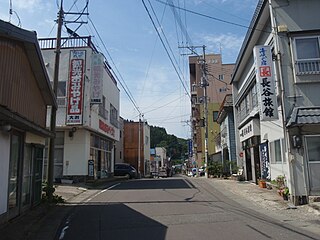
Kazamaura is a village located in Aomori Prefecture, Japan. As of 1 June 2017, the village had an estimated population of 2,002, and a population density of 28 persons per km2 in 942 households.. The total area of the village is 69.55 square kilometres (26.85 sq mi).

Sai is a village located in Aomori, Japan. As of 28 February 2017, the village had an estimated population of 2,149, and a population density of 15.9 persons per km2 in 978 households. Its total area of the village is 135.04 square kilometres (52.14 sq mi). In 2016, Sai was selected as one of The Most Beautiful Villages in Japan.

Sannohe is a town located in located in Aomori Prefecture, Japan. As of 1 October 2016, the town had an estimated population of 9,884, and a population density of 65.1 persons per km2. The total area of the town is 151.79 square kilometres (58.61 sq mi).

Takko is a town located in Aomori Prefecture, Japan. As of 31 January 2017, the town had an estimated population of 5,821, and a population density of 24 persons per km2, in 2,214 households.. The total area of the town is 241.98 square kilometres (93.43 sq mi).

Nanbu is a town located in Aomori Prefecture, Japan. As of 1 March 2017, the town had an estimated population of 18,906, and a population density of 123 persons per km2 in 7482 households. The total area of the town is 153.12 square kilometres (59.12 sq mi).

Hashikami is a town located in Aomori Prefecture, Japan. As of 1 March 2017, the town had an estimated population of 13,900, and a population density of 148 persons per km2 in 5,906 households. The total area of the town is 94.01 square kilometres (36.30 sq mi).

Tsugaru-Nakasato Station is a railway station on the Tsugaru Railway Line in the town of Nakadomari, Aomori, Japan, operated by the private railway operator Tsugaru Railway Company.

Ashino Chishōgun Prefectural Natural Park is a Prefectural Natural Park on the Tsugaru Peninsula in northwest Aomori Prefecture, Japan. Established in 1958, the park spans the borders of the municipalities of Goshogawara and Nakadomari. It encompasses Lake Ashino (芦野湖) and Ashino Park, which is planted with 2,300 cherry trees.

Natsudomari Peninsula is a peninsula on the northern end of the Japanese island, Honshū, that stretches north into Mutsu Bay. Administratively the area is a part of Aomori Prefecture, and the bulk of the area falls within the jurisdiction of the town of Hiranai, with Aomori city on the western periphery of the landform. The peninsula has several small fishing communities scattered around the coastline, but most of the area's people live in the river valley that demarcates the southern boundary of the peninsula. The peninsula is notably an attractive nesting place for Siberian tundra swan.

Ōshima is a rocky island off the northern coast of Natsudomari Peninsula in Mutsu Bay. The island is a part of Hiranai in Aomori Prefecture. The island has 3 km (1.9 mi) of coastline and an area of 0.16 km2 (0.062 sq mi). It is a part of the prefecture-maintained, Asamushi-Natsudomari Prefectural Natural Park.





